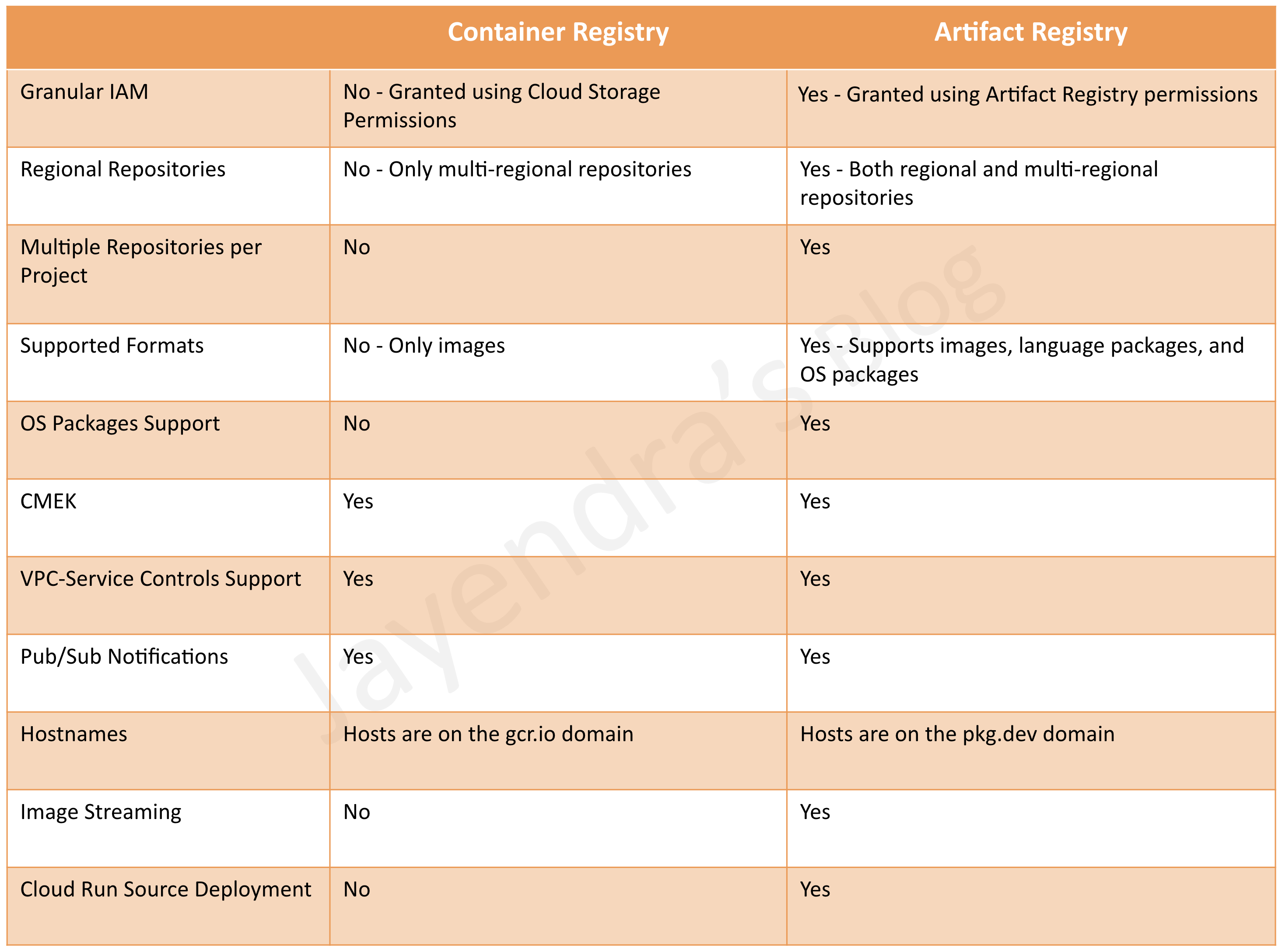Container Registry vs Artifact Registry

Container Registry
- Container Registry is a private container image registry that supports Docker Image Manifest V2 and OCI image formats.
- provides a subset of Artifact Registry features.
- stores its tags and layer files for container images in a Cloud Storage bucket in the same project as the registry.
- does not support fine-grained IAM access control. Access to the bucket is configured using Cloud Storage’s permissions.
- integrates seamlessly with Google Cloud services and works with popular continuous integration and continuous delivery systems including Cloud Build and third-party tools such as Jenkins.
- is used to store only docker images and does not support languages or os packages.
- is only multi-regional and does not support regional repository.
- supports a single repository within a project and automatically creates a repository in a multi-region.
- uses
gcr.io hosts.
- uses
gcloud container images commands.
- supports CMEK(Customer-Managed encryption keys) to encrypt the storage buckets that contain the images.
- supports several authentication methods for pushing and pulling images with a third-party client.
- caches the most frequently requested Docker Hub images on
mirror.gcr.io
- supports VPC-Service Controls and can be added to a service perimeter.
- hosts Google provided images on
gcr.io
- publishes changes to the
gcr topic.
- images can be viewed and managed from the Container registry section of Cloud Console.
- pricing is based on Cloud Storage usage, including storage and network egress.
Artifact Registry
- Artifact Registry is a fully-managed service with support for both container images and non-container artifacts, Artifact Registry extends the capabilities of Container Registry.
- Artifact Registry is the recommended service for container image storage and management on Google Cloud. It is considered the successor of the Container Registry.
- Artifact Registry comes with fine-grained access control via Cloud IAM using Artifact Registry permission. This enables scoping permissions as granularly as possible for e.g. to specific regions or environments as necessary
- supports multi-regional or regional repositories.
- uses
pkg.dev hosts.
- uses
gcloud artifacts docker commands.
- supports CMEK(Customer-Managed encryption keys) to encrypt individual repositories.
- supports multiple repositories within the project and the repository should be manually created before pushing any images.
- supports multiple artifact formats, including Container images, Java packages, and Node.js modules.
- supports the same authentication method as Container Registry.
mirror.gcr.io continues to cache frequently requested images from Docker Hub.- supports VPC-Service Controls and can be added to a service perimeter.
- hosts Google provided images on
gcr.io
- publishes changes to the
gcr topic.
- Artifact Registry and Container Registry repositories can be viewed from the Artifact Registry section of Cloud Console.
- pricing is based on storage and network egress.
GCP Certification Exam Practice Questions
- Questions are collected from Internet and the answers are marked as per my knowledge and understanding (which might differ with yours).
- GCP services are updated everyday and both the answers and questions might be outdated soon, so research accordingly.
- GCP exam questions are not updated to keep up the pace with GCP updates, so even if the underlying feature has changed the question might not be updated
- Open to further feedback, discussion and correction.
References
Artifact Registry vs Container Registry Feature Comparison
